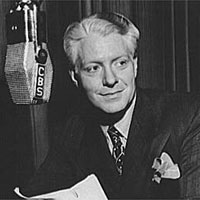 |

在無線電的「黃金時代」,播報員工作的時候都要盛裝打扮

|
 |
|
 |
哈丁總統在白宮裝設無線電:1922年2月8日
回到1920年代,那是收音機的「黃金年代」。廣播不再是一份生意或工作,廣播被視為一種非常迷人的專業。進行無線電廣播是相當正式的一件事,雖然沒有現場觀眾,但是播報員在工作時都必須要盛裝打扮,穿著燕尾服,甚至是長禮服。許多本地的電台都配置自己的交響樂團,有些電台甚至還有自己的劇團。每一個電台都有自己專屬的收聽群眾,每星期都會固定收聽喜歡的節目。無線電廣播在那時候達到高峰,而對當時的影響就像現在電視或網路所造成的影響一樣深遠。
Back in the 1920s, radio was in what is now called its "golden age." Broadcasting was more than a business or a job--it was considered to be a very glamorous profession. Radio was a formal affair; announcers dressed up for work in tuxedos and evening gowns, even if there was no studio audience. Many local stations had a staff orchestra, and some had their own dramatic groups. Each station had its own group of fans who tuned in each week to listen to their favorite programs. Radio was at its peak then, and its influence is much like that of TV or the Internet today.

 2/3 頁
2/3 頁
|





